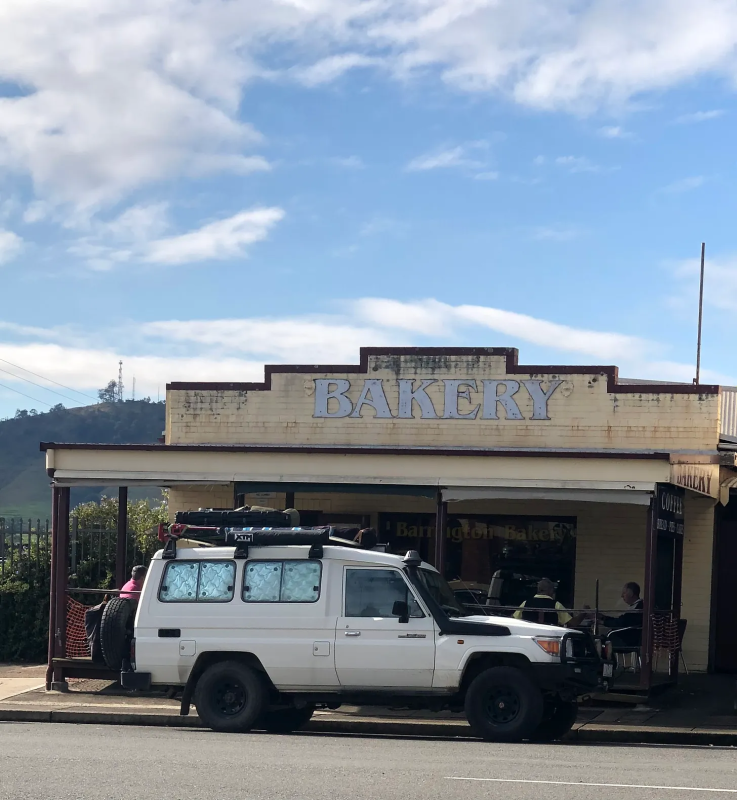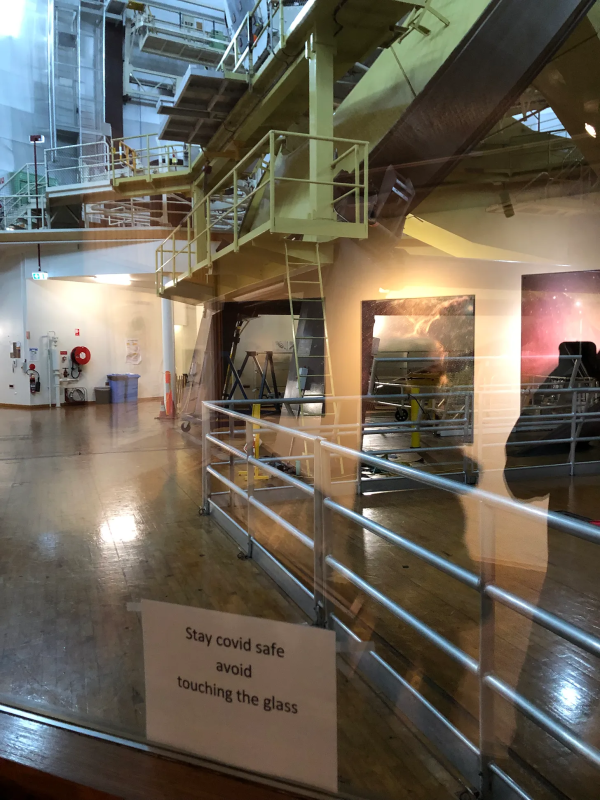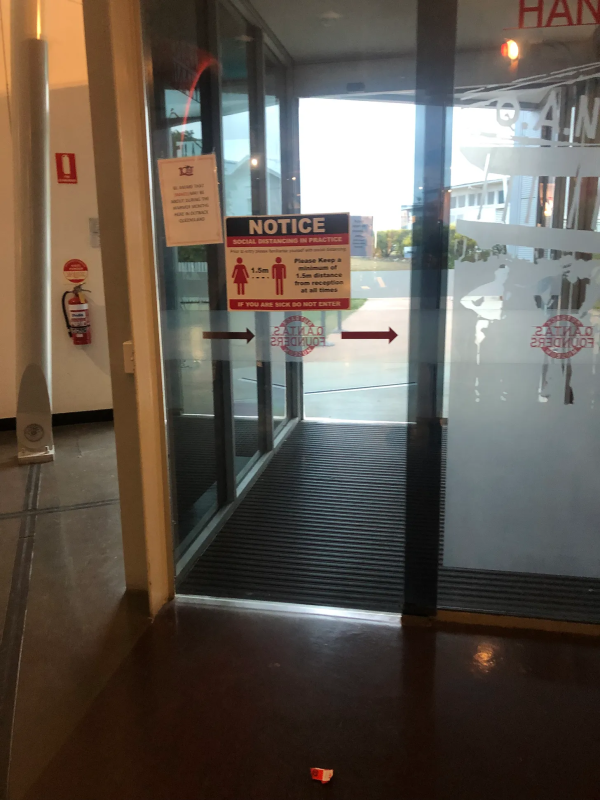

In the last 6 weeks, my wife and I enjoyed a touring holiday through Victoria, New South Wales, and Queensland, camping in or beside our 4WD. Passing through country towns along the way, especially at morning tea time, we scoured the main drag for signs of a bakery, in search of lamingtons, custard tarts, vanilla slices, and often a pre-made ham and salad roll to eat later for lunch. I’m happy to report we were quite often successful.


Another icon for which we scanned the horizon, before or after clocking the bakery, was of course the public toilet, for what the Tour de France commentators coyly refer to as a ‘nature break.’ I’m not sure what architectural norms in other countries dictate for these facilities but in Australia the typical structure is brick, square, utilitarian, and unmistakable. The only other building type that comes close is a power grid substation. So they are easy to spot.


Once inside, the scene is also predictable. Cleanliness in various degrees, graffiti in various degrees of artistry and obscenity, a receptacle for ‘sharps,’ and a spring-loaded tap dispensing non-potable water in one-second bursts. So far so normal, usual and in a weird way comforting.
But there is a new level of desecration still polluting both these icons of rural, and outback Australia. The flotsam and jetsam of so-called health advice, torn and tattered, flopping from the one remaining pin on a wall, at eye level for all to see, tell us like so many morons how to wash our hands. How to stay safe. How to stay apart from each other. In a dunny where rats enjoy unchallenged access and the aroma has a certain je ne sais quoi, a kind of cognitive dissonance creeps in. “Why is this faded sheet of WHO-branded bullshit still flapping its nonsense in a brick toilet in the Narrandera showgrounds four years after the freedoms of ordinary people were ripped away, and pissed up against such a wall as the one opposite the notice?” one asks oneself.
Shaking my head, and shaking my hands, as I leave the dunny, I have plenty of food for thought. And thought for food.
Back in the bakery, this time in Tenterfield, the vanilla slice takes my fancy. It looks good. It must be good, because the staff are obviously expecting the great vanilla slice armed robbery to happen any minute, judging by the piece of bullet-proof plexiglass where the cashier is. Then I remember that some idiot convinced thousands of other idiots that such a piece of plastic would ‘keep them safe.”
Nobody bats an eyelid, despite having to shout vanilla slice orders through an inch-thick piece of uselessness. Four years, for heaven’s sake, have people been spraying spittle onto that thing to make themselves heard. But no one has bothered to give the owner a spray about how useless and offensive the bloody thing is.
All through the country, this detritus remains, defiantly mocking us and daring us to do something about it, and about all it represents. From Moree to Maroochydore, from Mission Beach to Melbourne, it represents haughty condescension, abdication of reason, cowardly compliance, unimaginable hubris, fearful panic, submission. The very fact that it’s still there proves it.
Other manifestations of the same pathology crop up in unexpected places, places more sophisticated, more learned, more posh, more condescending than a humble bakery or dunny. At the Siding Springs Observatory, after eventually finding our way to the viewing gallery through a deserted carpark and closed visitor centre, pushing through the tumbleweeds to the elevator we looked through the glass to the world’s biggest telescope or whatever the boffins claim it to be. A couple of said boffins could be seen tinkering with it. But what struck me was the sign on the glass: “Stay covid safe avoid touching the glass.”


The gallery is tiny but nevertheless crams in a good deal of boastful information about how clever the whole contraption is. On the opposite wall to the viewing window, a display tells us that the optic fibres transporting the images are positioned with the help of ‘starbugs’ which are ‘tiny legless, armless robots that tip and totter around on a glass plate to position themselves. These little Bugs can be positioned accurately to within a few microns….’
I shake my head again, trying to clear the cognitive dissonance. “Why do these boffins, 4 years later, have a sign that says don’t touch the glass, otherwise you’ll die and kill your grandmother, and at the same time deploy their full suite of intellectual weaponry into perfecting the nano-movement of robots?
That sign looks new to me. I suspect it’s a ploy to avoid having to clean the glass of fingerprints and the smears of tiny fingers of children polishing off vanilla slices.
Longreach is a long reach from anywhere and happens to be the birthplace of our once-respected national carrier, Qantas. They’ve got a great museum there, tracing the development of the airline from its beginnings. You can visit the original hangar, where various original and replica items are on display. An aircraft hangar is a breezy, open space, obvs.
Before getting to the hangar, you need to go outside to a walkway and walk maybe 20 metres. To do that, you pass through an automatic sliding door. On the door, one is confronted by this sign:


“Social distancing in place. Please Keep (sic) a minimum of 1.5 metres from reception at all times.”
Stay apart from each other out in the hangar? But not inside in the museum part. Stay apart from each other? No, from reception? Head…spinning…must lie down.
I’ve had enough of this. I’m starting a new movement, ANTIVA. Anti-vandalism of normal public places with out-of-date propaganda. I’m going to tear it down and put it in a box and make a collection. One day they can form their own display and the boffins can come and see just how stupid they were.
If we must have propaganda, can it at least be new propaganda? How about bird flu? Something different. Please.
Republished from the author’s Substack
Join the conversation:


Published under a Creative Commons Attribution 4.0 International License
For reprints, please set the canonical link back to the original Brownstone Institute Article and Author.









